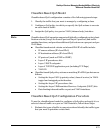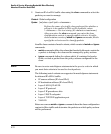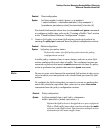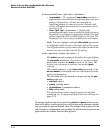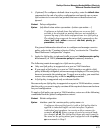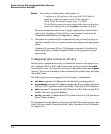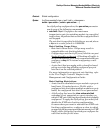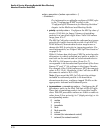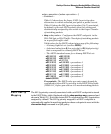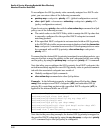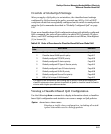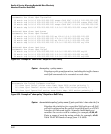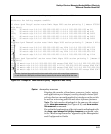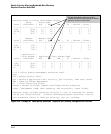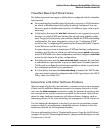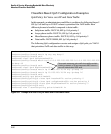
Quality of Service: Managing Bandwidth More Effectively
Advanced Classifier-Based QoS
DSCP-802.1p
Mapping
action <qos-action > [action <qos-action > ...]
—Continued—
Table 6-2 shows how the Layer 2 802.1p priority value
determines to which outbound port queue a packet is sent.
Table 6-8 shows the 802.1p priority value (0 to 7) associated,
by default, with each IP Precedence three-bit setting and
automatically assigned by the switch to the Layer 2 header
of matching packets.
• dscp < dscp-value >: Configures the DSCP codepoint in the
IPv4 ToS byte or IPv6 Traffic Class byte of matching packets
in a specified traffic class.
Valid values for the DSCP codepoint are any of the following:
– A binary eight-bit set (such as 100110)
– A decimal value from 0 (low priority) to 63 (high priority)
that corresponds to a binary DSCP bit set
– The ASCII standard name for a binary DSCP bit set:
af11 (001010) af42 (100100)
af12 (001100) af43 (100110)
af13 (001110) ef
(101110)
af21 (010010) cs1
(001000) = precedence 1
af22 (010100) cs2
(010000) = precedence 2
af23 (010110) cs3
(011000) = precedence 3
af31 (011010) cs4
(100000) = precedence 4
af32 (011100) cs5
(101000) = precedence 5
af33 (011110) cs6
(110000) = precedence 6
af41 (100010) cs7
(111000) = precedence 7
default
(000000)
Prerequisite: The DSCP value you enter must already be
configured with an 802.1p priority in the DSCP Policy table
(Table 6-11) before you can use it to mark matching packets.
The 802.1p priority currently associated with each DSCP codepoint is stored
in the DSCP Policy table (displayed with the show qos dscp-map command and
shown in Table 6-11). Note that certain DSCP codepoints have 802.1p priorities
assigned by default. The 802.1p priority mapped to a DSCP codepoint is
automatically applied in matching packets whose codepoint is reset with the
class action dscp command in a QoS policy.
6-79



